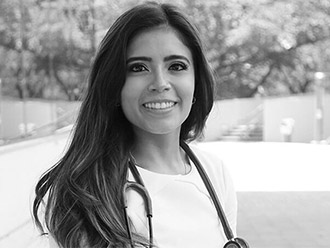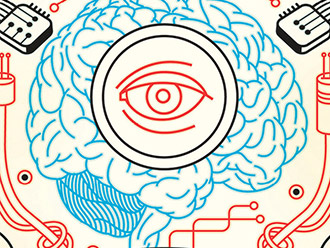When COVID-19 began sweeping through the population in 2020, the higher education community faced a daunting challenge: how to continue its important educational and research work in the face of a global pandemic.
For The University of Texas at Arlington, the answer was to become nimble and innovative in adapting its mission for a world where social distancing is fundamental to health. In addition to new course modalities and safety protocols, this meant shifting a portion of the University’s $120 million research enterprise to help the global community combat the deadly virus.
From developing faster tests to designing better supply chains to combating dangerous misinformation, UTA’s service-oriented researchers answered the call. By the end of July, their collective, urgent efforts had uncovered new insights to aid healthier communities.
Tracing COVID’s Roots
Understanding the origins and nature of the COVID-19 virus quickly became a top priority for researchers working to stymie its transmission—especially given how fast misinformation spreads in the digital age.
One of those scientists tackling the issue was Todd Castoe, associate professor of biology. He used his expertise in genomics to join collaborators in studying how the coronavirus jumped to humans and in reconstructing its evolutionary history. Partnering with David Pollock, professor of biochemistry and molecular genetics at the University of Colorado; doctoral student Blair Perry; and an international team of collaborators, Dr. Castoe found that the best current evidence points to horseshoe bats or possibly pangolins—a scaly anteater found in China—as likely ancestor hosts for the virus. This conclusion refutes an earlier study’s suggestion that the coronavirus made the leap from dogs to humans.
In the resulting paper for Molecular Biology and Evolution, the team emphasized how easy it is for speculative or weakly supported findings to be blown out of proportion. If such tenuous evidence were used to make decisions on managing the crisis, it could result in needed resources and efforts being wasted.
“Considering the ramifications, scientists need to be particularly careful in interpreting findings and avoid rushing to conclusions that are not well-supported by solid evidence,” Castoe says. “We need to get this right.”
In tandem with the study on host species, he and Perry also joined a study to trace and reconstruct the evolutionary history of the virus. They discovered that the genetic lineage of SARS-CoV-2—the virus that causes COVID-19—has been circulating in bats for decades.
“Understanding the origins of SARS-CoV-2 is a major priority because it may provide evidence for how and why this virus was transferred to humans, and how similar transfers to humans may be prevented in the future,” Castoe says.
Exploring Treatment Options
In the early days of the COVID-19 pandemic, two decades-old antimalarial drugs, chloroquine and hydroxychloroquine, were touted as preventive and therapeutic treatments for the virus.
In response, Mauro Toledo Marrelli, associate professor of research, and Marco Brotto, nursing professor and director of the Bone-Muscle Research Center, took to the laboratory to study the actual effectiveness of the drugs. What they uncovered raised red flags for at-risk populations.
“Using chloroquine and hydroxychloroquine as prophylactic or therapeutic alternatives for SARS-CoV-2 infection is, at best, hypothetical, but their side effects are factual,” the researchers wrote in a paper for Revista de Saúde Publica. “In fact, the drugs could contribute to the exacerbation of musculoskeletal diseases in older adults at risk for developing severe COVID-19.”
While researchers across campus focused on combating COVID-19, others looked for ways to support the community in its hour of need.
The team found that there is a shortage of peer-reviewed, rigorous, pre-clinical cell-based, animal-based, and/or randomized clinical studies supporting the effectiveness of the two drugs in treating COVID-19. But there is plenty of evidence supporting the dangers of the drugs’ side effects.
“Prescribing these two drugs can trigger problems in certain populations,” says Dr. Brotto, who is also the George W. and Hazel M. Jay Endowed Professor and director of UTA’s nursing doctorate program. “There is well-documented evidence that these drugs accumulate in cells from several tissues with consequent tissue injury in the liver, retina, skeletal, and cardiac muscle cells. Effects include irreversible cardiac effects, myopathy, and neuropathy.”
For the team, the risks outweigh the benefits. This conclusion was echoed in the vocal hesitation of organizations such as the National Institutes of Health, the Centers for Disease Control and Prevention, and the World Health Organization to recommend the drugs for COVID-19 treatment.
“We only want to find the best treatment alternatives for patients based on the foundation of medical ethical treatment for over 2,500 years, ‘First, do no harm,’” Brotto says.
New Pathways for Recovery
In addition to grappling with the present reality of COVID-19, UT Arlington researchers also began laying the foundation for efficient testing and treatment options to help the U.S. emerge on the other side of the pandemic.
Seong Jin Koh, professor of materials science and engineering, is using a National Science Foundation (NSF) RAPID grant to develop a $5 device that can deliver COVID-19 testing results on-site in about 10 minutes. The thumb-sized device relies on nanotechnology on a one-centimeter-square silicon chip.
“Our new technology will allow health officials to quickly and easily determine if a person is a COVID-19 carrier,” Dr. Koh says. “Because it is portable, the device could be used in airports and other high-volume locations. The chip could be mass-produced by the millions each day and help ease the demand for testing kits.”
It also has potential for usefulness beyond the COVID-19 pandemic, as it can easily be adjusted to detect other illnesses. Such a device would be valuable in future outbreaks or for detecting common diseases such as the flu, with the advantage that production could begin on a large scale immediately.
The NSF’s investment in UTA continued with Erick Jones, professor of industrial, manufacturing, and systems engineering. He is working with artificial intelligence to develop a rapid-response supply chain designed to quickly deliver COVID-19 medications, once they are available, to vulnerable urban populations in Texas.
A collaboration with the city of Houston, the project has the potential to get needed treatments into the hands of the most critically ill and at-risk populations and prevent hospitals from becoming overwhelmed.
L-R: Todd Castoe is researching COVID- 19’s origins, Erick Jones is bolstering the medication supply chain, and Seong Jin Koh is developing a rapid, portable test.
“We’ve seen that hospital capacity is being strained with elderly people or those with no other health care options,” Dr. Jones says. “If we could provide medications to the people who are most at-risk and least likely to easily access them, it will free up capacity for people who need ventilators.”
To that end, he is creating a real-time map that would allow the Houston Health Department to supply medication to people who are critically ill first. It would also present a more detailed picture of who is at risk of contracting the disease or who already may have it.
Further, Jones plans to design a process to enable anti-COVID-19 drugs to be delivered to a central point in a neighborhood for pickup. Doctors or social workers could then visit with patients via telemedicine, verify that the medication is correct, and witness the patient take it to ensure that it is being used effectively.
Improving Safety
At the UT Arlington Research Institute (UTARI), faculty are working to address a major challenge facing health care workers on the front lines of the pandemic.
Principal Research Scientists Nick Gans and Muthu Wijesundara, Research Scientist Michael Araujo, and biology Associate Professor Michael Roner are exploring the ability of UV light to inactivate viruses and other microorganisms, something that could be used to create a new class of personal protective respirators.
Personal protective equipment (PPE) can filter viral particulates, reducing the wearer’s risk of contracting coronavirus. But to maintain effectiveness and safety, medical personnel are meant to use a new mask for each patient—something that, during a heightened outbreak like the COVID-19 pandemic, could translate to five or more respirators an hour.
Keeping up a supply of these masks during the pandemic has proven difficult. The novel approach by the UTARI team could allow respirators to be long-term devices, reduce transmission rates, improve access to respirator masks, and lower overall costs.
Beyond the Lab
While researchers across campus focused on combating COVID-19, others looked for more immediate ways to support the community in its hour of need.
TMAC at UTA received $3.3 million in federal funding to help small- and medium-sized businesses respond to the pandemic as part of funding authorized by the CARES Act and distributed by the Department of Commerce’s National Institute of Standards and Technology. Such funding was critical for these entrepreneurs, as the pandemic underscored supply chain weaknesses that have been around for decades.
“Many products are produced by foreign supply chains. When these chains are disrupted, it causes havoc in producing and providing products to U.S. consumers,” explains Mark Sessumes, TMAC state executive director. “Health-related products, including equipment, pharma, and PPE, don’t just impact American lives, but also our economy, safety, and security.”
The North Texas Genome Center (NTGC) focused its attention on bolstering the campus’ testing capacity. Thanks to its recent certification under the Clinical Laboratory Improvement Amendments (CLIA), the facility was able to establish on-site COVID-19 test processing to help provide for the repopulation of campus.
“In the years since it was established, the NTGC has earned a highly respected reputation in genome sequencing for biomedical research,” says Jon Weidanz, associate vice president for research and director of the NTGC. “After becoming CLIA-certified in January, we were poised to begin human genome sequencing for medical purposes. Then COVID hit, and we jumped into action to be able to serve our community.”
Whatever shape the pandemic has taken as it spikes and falls, one thing has proven clear: UT Arlington stands ready to join the global community in creating and supporting new pathways for healing.


